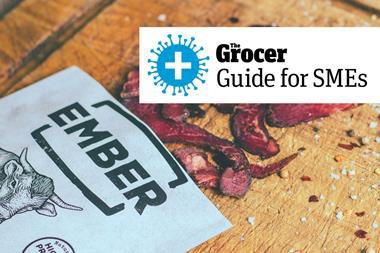![Guide to SMEs_Article image_long[3]](https://dmrqkbkq8el9i.cloudfront.net/Pictures/480xany/2/3/6/183236_guidetosmes_articleimage_long3_307021.jpg)
This is part of our free series, Guide for SMEs, which aims to provide practical, actionable advice for small food and drink brands affected by the coronavirus crisis
It has been a hot few months since the Treasury rushed to roll out what seemed like a solution to every small business’ cashflow problem during the coronavirus pandemic: the Coronavirus Business Interruption Loan Scheme, or CBILS.
As is now well-known, things weren’t as easy as they seemed, with the scheme coming under fire multiple times for its unclear eligibility criteria, demanding personal guarantees and more.
And while those issues have since been ironed out, the whole application process – with its multiple detailed steps – might still cause some panic among SME founders.
So The Grocer spoke to Atom bank to create a step-by-step guide to nail your CBILS application and secure that much-needed funding.
Step 1: Understand what it is you actually want/need
“CBILS has been initiated to support businesses through a stage of acute shock,” says David Castling, director of intermediary lending at Atom. “What we mean by this is that under normal, non-Covid circumstances, these businesses would be thriving and accepted by the majority of banks, should they need to apply for finance.”
Since the scheme allows businesses to apply for funding based on a proportion of turnover or a company’s liquidity needs, he adds, it is “vital” enough money is applied for by the business to ensure its survival.
Step 2: Get some advice
If you are unclear about what your needs may be or how to secure the funding, speak to someone with a good view of the market.
“ An independent broker can guide the business through the best solution and in turn the best lender to meet the needs of the firm,” Castling adds.
“A good broker will also be able to help you avoid any potential pitfalls and would evaluate immediately if your potential application would meet the baseline eligibility of both the CBILS scheme and the lending criteria of the selected lender.
“We understand that no business seeking finance wants to be turned down, but the only kind of good ‘no’ is a quick one. This will save time and effort on your part and allow you to seek alternative solutions.”
Step 3: Preparing for your loan application
Applications vary from lender to lender, so once again having a good broker will help you make sure you tick all the boxes of the one you have selected.
Ensure you have everything you need to support your application before sending it in, Castling recommends.
“The more effort put in at this stage, the slicker and speedier the loan application process will be.”
Atom, for example, requires businesses to provide the following documents to properly evaluate a CBILS form:
- Application form
- CBILS supplementary form
- ALIE (assets, liabilities, income, expenditure)
- Accounts for the past two years
- Up-to-date management information
- Consent to credit search
Step 4: Application submission
Once you have prepared all the relevant documents, submit them to the lender, which will then review them and carry out a number of background checks on you and your business.
Step 5: Agreement in Principle
If your business meets all the criteria, you then proceed to the next step and the lender will be able to give a decision on whether they are able to provide you finance.
“At this stage we call this an Agreement in Principle,” explains Casting. “This agreement is subject to a suitable valuation being carried out and the completion of all required legal work.”
Step 6: Valuation/legal process
A qualified valuer will then be instructed to carry out a valuation on your business premises, where they will visit the business and return a valuation figure to the lender for review.
Additionally, at this stage, a suitably qualified law firm will carry out the legal work required associated with a loan application.
Step 7: Loan offer
Once the business has been valued in line with initial expectations and if the application still meets all other criteria, the lender will be able to provide a full loan offer to you at this stage.
Step 8: Completion
After completion of all legal work, the lender will liaise with you and your broker to establish the completion date and when the money will be released to you.



![XOXO-Product-Shot[ALL FLAVOUR]-Sky-1920x1080](https://dmrqkbkq8el9i.cloudfront.net/Pictures/274x183/4/9/2/355492_xoxoproductshotallflavoursky1920x1080_806584_crop.jpg)








![Guide to SMEs_2[1]](https://dmrqkbkq8el9i.cloudfront.net/Pictures/380x253/2/0/6/183206_guidetosmes_21_549980.jpg)
![Guide to SMEs_3[1]](https://dmrqkbkq8el9i.cloudfront.net/Pictures/380x253/2/0/5/183205_guidetosmes_31_674059.jpg)






No comments yet